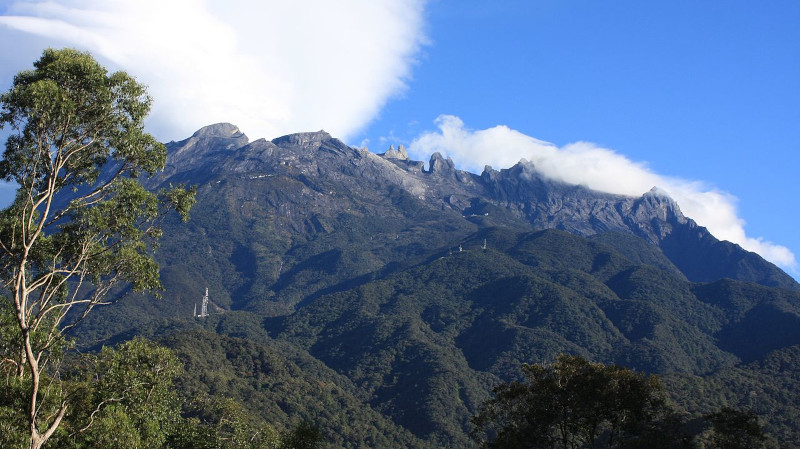Mount Kinabalu Facts
- The english name for this stunning geological formation remains the most frequently used one. That’s the term of Mount Kinabalu. It does have other names, however, in other languages. These include Gunung Kinabalu in Malay, and Gayo Ngaran, in Dusun.
- Regardless of which term one uses to refer to it, though, it’s an impressive sight. It also holds several respectable positions in various hierarchies. For one, it’s the highest mountain in its specific region. Plus, it’s also the third highest mountain of its kind.
- The prestigious positions it holds do not simply end there, however. That’s because this geological marvel also ranks as the 20th most prominent peak in the world, in terms of topographic prominence. The combination of these factors provides it a unique stature.
- This extraordinary formation also bears yet another distinction. The sheer abundance of flora and fauna on the mountain and its surrounding region boggle the mind. Many of these also appear nowhere else on earth, such as the Kinabalu Giant Red Leech.
- Fortunately for those who appreciate Nature, though, Mount Kinabalu now enjoys a certain level of protection. That stems from the fact that it’s now a protected site. In fact, it now forms part of Kinabalu Park, which is part of a World Heritage Site.
Related Articles
Mount Kinabalu Physical Description
The physical characteristics of the magnificent Mount Kinabalu easily impresses those individuals fortunate enough to visit it. It further does this in several different ways. In this manner, the feature distinguishes itself from countless others elsewhere in the world.
Firstly, this awe-inspiring mountain boasts a sincerely impressive maximum measured height. That’s because recent satellite surveys established this to be 13,435 ft (4,095 m). Previous surveys, however, erroneously listed its height as roughly 20 ft (6.1 m) greater.
Secondly, though, comes the summit of this awesome product of geological forces. Though no precise measurements of this aspect of the site exist, the viewer can judge for themselves with a simple viewing. Few similar features have summits so proportionately broad.
Yet the astonishing nature of this world class creation of Nature doesn’t end there. That’s due to the fact that on the northern side of Mount Kinabalu a special, individual feature also appears. That’s a truly incredible gorge, carved out by glacial activities long ago.
This specific structure bears the name of Low’s Gully. The name honors the first known person to observe it, Hugh Low, in 1851. This remarkable gorge measures approximately 5,906 ft (1,800 m) deep at its greatest extreme. It also presents extremely steep walls.
Mount Kinabalu Location, Geology, and Ecology
The compelling Mount Kinabalu formed in a portion of the world already highly renowned for its natural splendor. Although many individuals rightly think of the flora and fauna of the region in such terms, many geological features in the region deserve equal respect.
That holds true due to the fact that this marvelous site formed in a particularly remote and insulated portion of what man now calls Asia. More precisely, it lies on the massive island of Borneo. There, the natural wonder lies within the borders of the country of Malaysia.
This massive structure is essentially an enormous protrusion of stone from the surrounding terrain. It further forms part of the Kinabalu massif. Geologists also estimate that it protruded from the earth’s crust sometime during either the Eocene or Miocene Epochs.
Evidence also indicates it to be a relatively recent formation, at least in geological terms. It’s believed that the stone its composed of, and igneous rock called granodiorite, only cooled about 10 million years ago. This originated as molten rock from deep within the earth.
Partly due to the volcanic nature of its soil, Mount Kinabalu now ranks as a biodiversity hotspot. This includes plants of Australasian, Himalayan, and Indomalayan origin. It’s further estimated that between 5,000 and 6,000 different plant species appear on its slopes.
This site also shelters hundreds of different fauna species. These include 326 species of birds, over 100 mammals, and numerous insects and earthworm varieities.. Additionally, a number of these species, scattered across all Kingdoms, appear nowhere else on earth.
Features Sharing Its Region
Check out our other articles on 3 Particularly Pleasing Porpoises, Honey Badger, Macquarie Island, Hibiscus Harlequin Bug, Tree Heather, Satanic Leaf-Tailed Gecko, Shoebill

